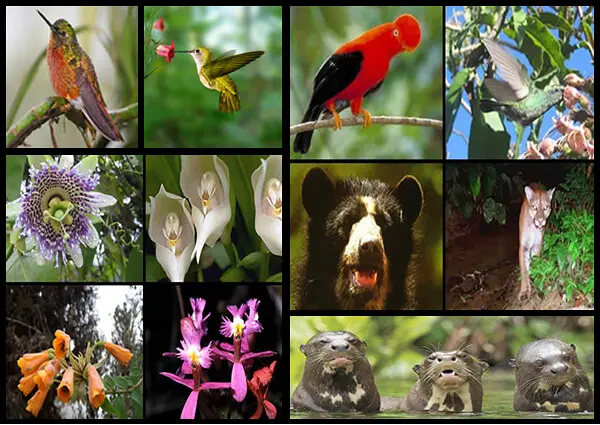Hello bloggers, today we’re going to talk and write about Animals in Machu Picchu fauna and flora . Learn more by reading our blog.
What animals live in Machu Picchu?

The Historic Sanctuary of Machu Picchu is a natural paradise that protects an impressive biodiversity. Spanning over 32,500 hectares, this UNESCO-recognized natural and cultural area serves as a refuge for a wide variety of wildlife.
Thanks to its unique geography and climate, the sanctuary hosts diverse ecosystems that shelter a rich array of animal species.
Among the most notable species are:
- 70 mammal species
- 420 bird species
- 300 butterfly species
- 22 reptile species
- 13 amphibian species
This natural richness makes Machu Picchu an ideal destination for nature lovers and wildlife enthusiasts. Every hike along its trails offers a chance to encounter unique species and experience a deep connection with Andean nature.
Iconic Mammals of the Sanctuary
When visiting Machu Picchu, you not only marvel at its archaeological legacy but also step into a unique ecosystem where wildlife coexists harmoniously with cloud forests, steep mountains, and deep valleys. During your visit, if you stay alert and lucky, you might spot some of the most iconic mammals of the Andean-Amazon region:
- Spectacled Bear (Tremarctos ornatus ) : This is the only bear native to South America and is listed as a vulnerable species. It lives mainly in dense vegetation areas and is difficult to spot due to its solitary and cautious behavior. Its presence is essential for ecological balance, as it helps disperse seeds throughout the forest.
- Andean Puma (Puma concolor ) : Plays a key role in regulating animal populations. It’s very elusive and rarely seen, though its tracks and signs can sometimes be identified.
- Vizcacha (Lagidium peruanum ) : A small rodent resembling a chinchilla, easily recognized by its long tail and rounded ears. It lives among rocky crevices and often comes out to bask in the sun during the early hours of the day.
- Taruka or Andean Deer (Hippocamelus antisensis ) : An endemic deer species of the Andes, currently endangered due to habitat loss and illegal hunting.
- Sachacabra or Pudu (Pudu mephistophiles ) : Considered the smallest deer in the world, measuring only 12 to 16 inches tall. It lives in dense vegetation and is extremely shy.
Notable Bird Species
The Historic Sanctuary of Machu Picchu captivates not only with its archaeological legacy and mountainous landscapes, but also offers the opportunity to explore exceptional biodiversity. During your visit, you’ll have the chance to admire a wide variety of birds, butterflies, reptiles, and amphibians living in this unique environment.
Some of the most remarkable birds include:
- Peruvian Cock-of-the-Rock (Rupicola peruvianus ) : The national bird of Peru, known for its bright orange plumage and fan-shaped crest. It often performs courtship dances accompanied by loud calls. You may spot it in areas like Mandor Garden.
- Andean Condor (Vultur gryphus ) : One of the largest flying birds in the world, with a wingspan of up to 10 feet. It soars over canyons and high peaks searching for carrion and is a powerful symbol of the Andes and Andean cosmology.
- Giant Hummingbird (Patagona gigas ) : The largest hummingbird species, yet still incredibly agile. Despite its size, it hovers from flower to flower feeding on nectar. It’s commonly seen in open, sunny areas.
- Tanagers and Toucans : These colorful birds are found in cloud forests, adding vibrancy and diversity to the ecosystem.
- Butterflies : The sanctuary is also home to an impressive variety of insects, with butterflies playing a prominent role. Over 300 species have been recorded in the area.
Where and When to Spot Wildlife
Observing animals in their natural habitat at Machu Picchu is one of the most rewarding experiences you can have during your visit. To increase your chances of spotting local wildlife, it’s important to consider the time of day, season, and strategic locations.
Best time to observe wildlife: Early morning and late afternoon are usually the best times to see animals active in their natural surroundings.
Contact Us:
For more information, please contact us DREAMY TOURS, we will be happy to answer all your questions about Peru, Bolivia and Chile.
We specialize in tours and travel packages as a Travel Agency. If you need information, please contact us.
We offer tours, excursions – Peru – Bolivia – Chile:










